Analysis of the expression pattern of the schizophrenia-risk and intellectual disability gene TCF4 in the developing and adult brain suggests a role in development and plasticity of cortical and hippocampal neurons
- PMID: 29588831
- PMCID: PMC5863811
- DOI: 10.1186/s13229-018-0200-1
Analysis of the expression pattern of the schizophrenia-risk and intellectual disability gene TCF4 in the developing and adult brain suggests a role in development and plasticity of cortical and hippocampal neurons
Abstract
Background: Haploinsufficiency of the class I bHLH transcription factor TCF4 causes Pitt-Hopkins syndrome (PTHS), a severe neurodevelopmental disorder, while common variants in the TCF4 gene have been identified as susceptibility factors for schizophrenia. It remains largely unknown, which brain regions are dependent on TCF4 for their development and function.
Methods: We systematically analyzed the expression pattern of TCF4 in the developing and adult mouse brain. We used immunofluorescent staining to identify candidate regions whose development and function depend on TCF4. In addition, we determined TCF4 expression in the developing rhesus monkey brain and in the developing and adult human brain through analysis of transcriptomic datasets and compared the expression pattern between species. Finally, we morphometrically and histologically analyzed selected brain structures in Tcf4-haploinsufficient mice and compared our morphometric findings to neuroanatomical findings in PTHS patients.
Results: TCF4 is broadly expressed in cortical and subcortical structures in the developing and adult mouse brain. The TCF4 expression pattern was highly similar between humans, rhesus monkeys, and mice. Moreover, Tcf4 haploinsufficiency in mice replicated structural brain anomalies observed in PTHS patients.
Conclusion: Our data suggests that TCF4 is involved in the development and function of multiple brain regions and indicates that its regulation is evolutionary conserved. Moreover, our data validate Tcf4-haploinsufficient mice as a model to study the neurodevelopmental basis of PTHS.
Keywords: Neurodevelopment; Pitt-Hopkins syndrome; Schizophrenia; TCF4.
Conflict of interest statement
The authors declare that they have no competing interests.Springer Nature remains neutral with regard to jurisdictional claims in published maps and institutional affiliations.
Figures
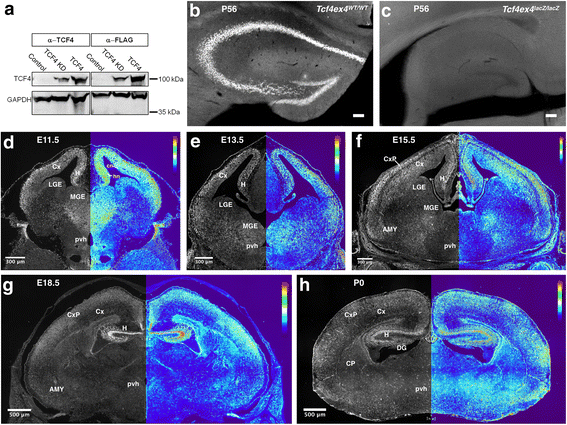


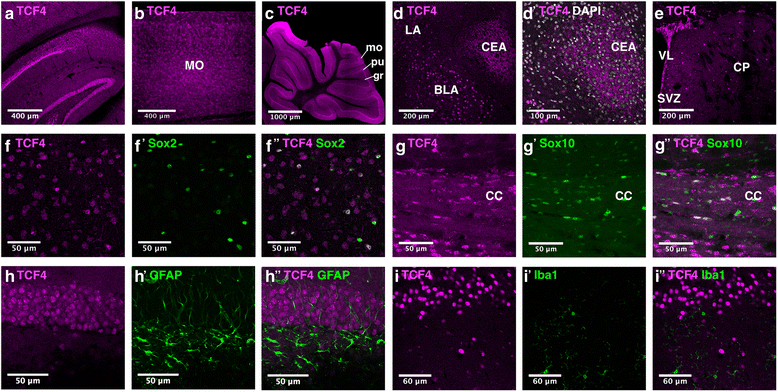
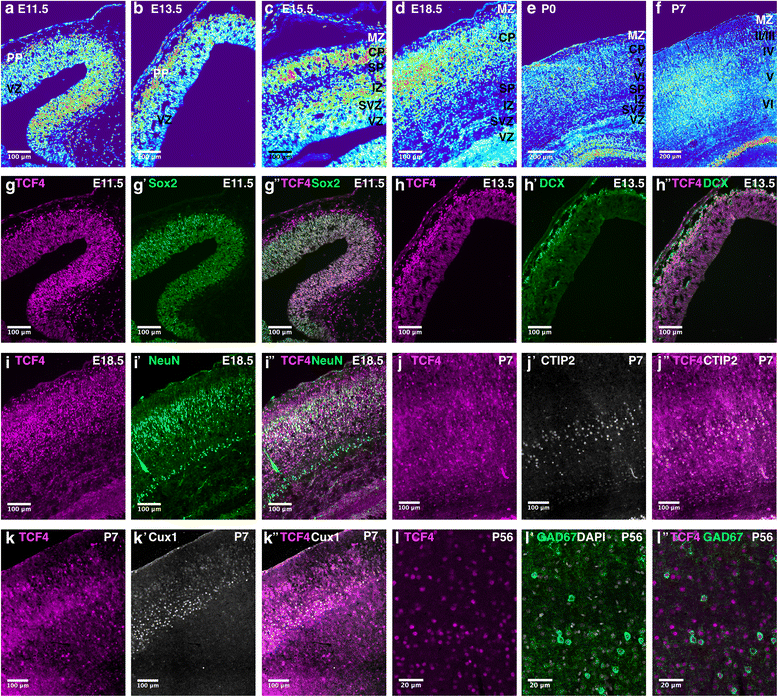

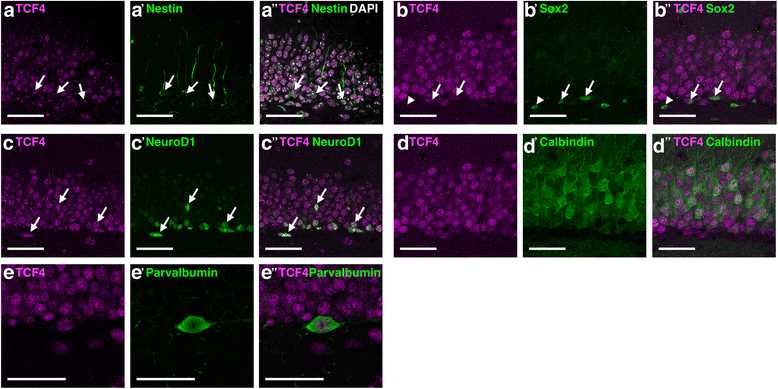
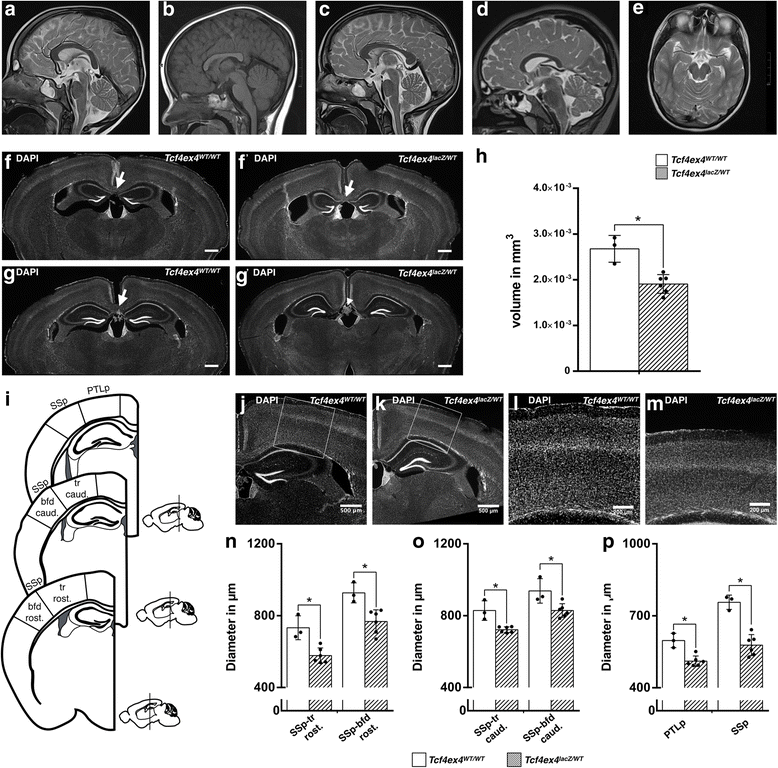
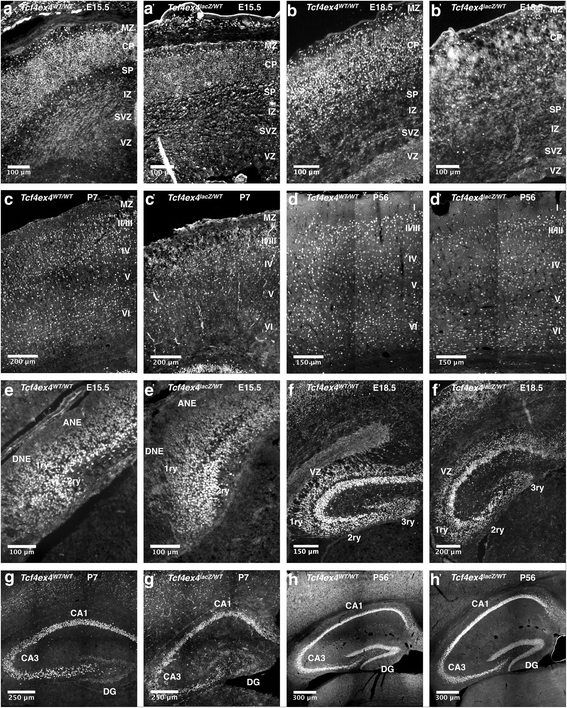
References
-
- Amiel J, Rio M, de Pontual L, Redon R, Malan V, Boddaert N, Plouin P, Carter NP, Lyonnet S, Munnich A, Colleaux L. Mutations in TCF4, encoding a class I basic helix-loop-helix transcription factor, are responsible for Pitt-Hopkins syndrome, a severe epileptic encephalopathy associated with autonomic dysfunction. Am J Hum Genet. 2007;80:988–993. doi: 10.1086/515582. - DOI - PMC - PubMed
-
- Zweier C, Peippo MM, Hoyer J, Sousa S, Bottani A, Clayton-Smith J, Reardon W, Saraiva J, Cabral A, Gohring I, et al. Haploinsufficiency of TCF4 causes syndromal mental retardation with intermittent hyperventilation (Pitt-Hopkins syndrome) Am J Hum Genet. 2007;80:994–1001. doi: 10.1086/515583. - DOI - PMC - PubMed
Publication types
MeSH terms
Substances
Supplementary concepts
LinkOut - more resources
Full Text Sources
Other Literature Sources
Medical
Molecular Biology Databases

